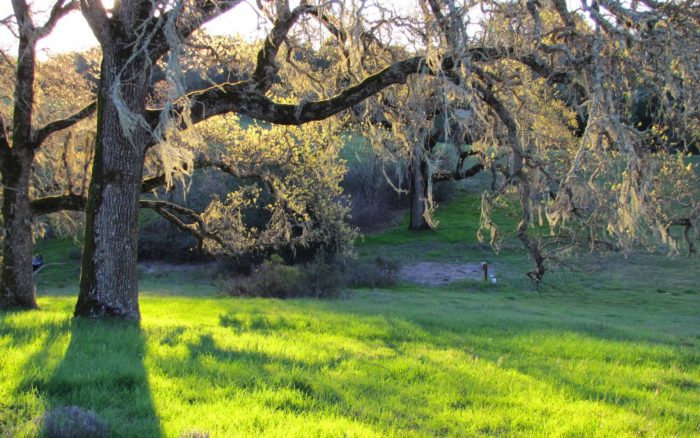Climate Change and Protecting Valley Oaks
We mark the seasonal data in a small notebook that I keep on an altar table in our home: first milkmaid of the year, first Valley oak leaves, the day the upper pond fills, first shooting star wildflower, first blue-eyed grass—and so on.
First milkmaid: January 5, 2005; January 17, 2006; December 21, 2007; January 30, 2009; January 13, 2010; January 25, 2011; January 15, 2012; January 7, 2013; March 3, 2014 (drought); January 15, 2015. All pretty constant, and first blooming on the trail we call Coyote Trail, because the coyotes leave their bones in a small meadow near the top.
But Valley Oak: oh my. This year they push leaves in the meadow just south of our home almost six weeks before the average. Dates of first pushing in years past: March 4, 2004; February 10, 2005; February 20, 2006; March 3, 2007; February 27, 2008; January 28, 2009; March 5, 2010; March 4, 2012; March 7, 2011; February 17, 2014; February 7, 2013. This year: January 23, 2015.
Our oaks are feeling the drought, looking weary this last fall, freshened now with December rains, but pushing leaves so much more quickly after the warmest and driest January on record. Does drought impact how quickly they push leaves, or is it only the heat? And what about the impact on the oaks by our neighbors pumping water from a well drilled very close to several of the ancients? I am told that we don’t know the impact of well drilling in these dry hills on these graceful giants.
We are in a time we need to study the whole, the trends, the process of evolving life, if we are to make intelligent decisions about what we do in farming. The so-called right to farm should not trump the needs of nature and of watershed. Consider attending one of the showings of Russian River: All Rivers: The Value of an American Watershed.It will be showing at the Cameo theater in St. Helena on March 4. Use this link for a reservation. All showings have filled!
